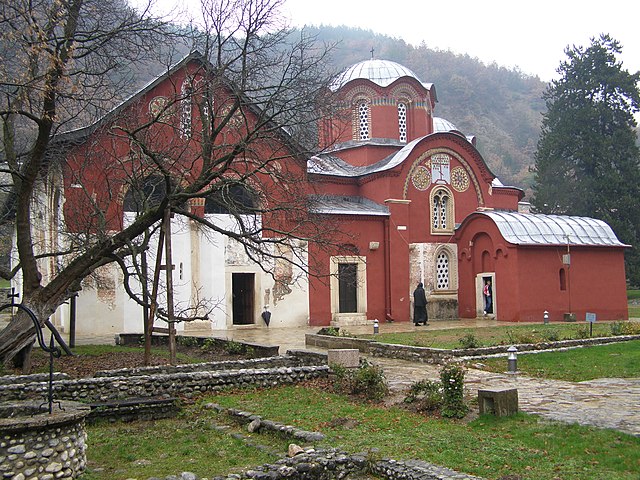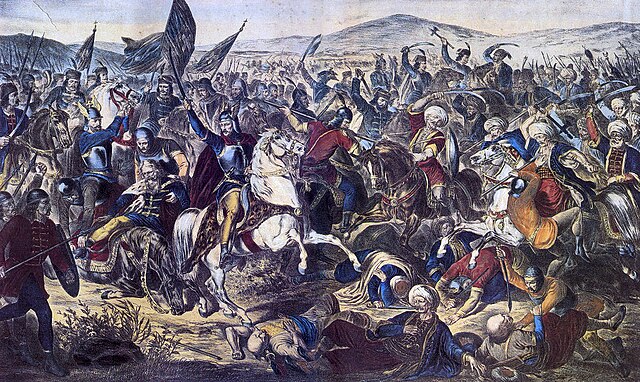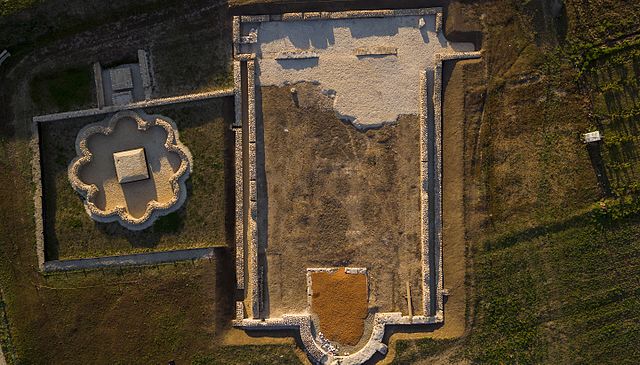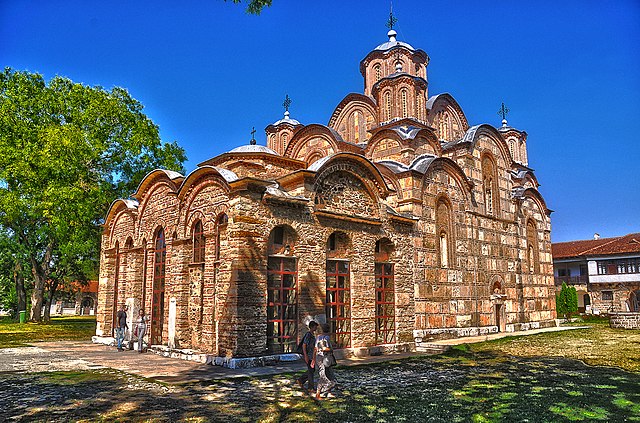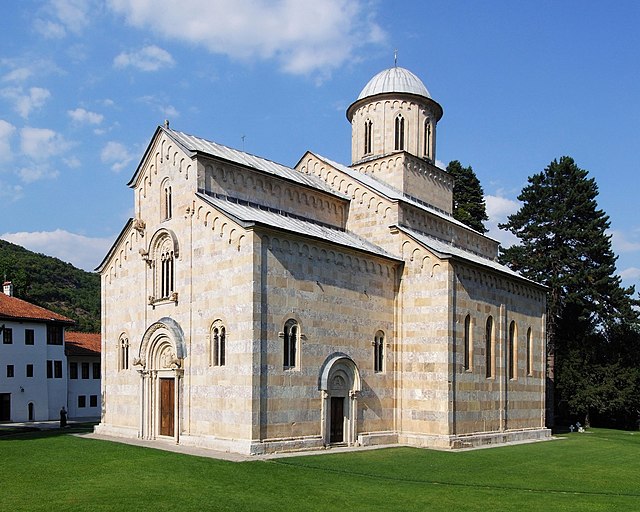Kosovo Serbs are one of the ethnic groups of Kosovo and they form the largest ethnic minority community in Kosovo (5–6%). The precise number of Kosovo Serbs is difficult to determine as they have boycotted national censuses. However, it is estimated that there are about 95,000 of them, nearly half of whom live in North Kosovo. Other Kosovo Serb communities live in the Southern municipalities of Kosovo.
Girls from Štrpce in Serbian traditional clothing
Novo Brdo Fortress was built by Stefan Milutin, King of Serbia. It has been referred as the "Mother of all Serbian cities"
Patriarchate of Peć, the seat of the Serbian Orthodox Church from the 14th century when its status was upgraded into a patriarchate
Battle of Kosovo fought in 1389 between Serbs and Ottomans. 1870 Adam Stefanović painting.
Kosovo, officially the Republic of Kosovo, is a country in Southeast Europe with partial diplomatic recognition. Kosovo lies landlocked in the centre of the Balkans, bordered by Serbia to the north and east, North Macedonia to the southeast, Albania to the southwest, and Montenegro to the west. Most of central Kosovo sits on the plains of Metohija and the Kosovo field. The Accursed Mountains and Šar Mountains rise in the southwest and southeast, respectively. Kosovo's capital and largest city is Pristina.
Neolithic Goddess on the Throne is one of the most significant archaeological artifacts of Kosovo and has been adopted as the symbol of Pristina.
Ruins of Ancient Ulpiana situated southeast of Pristina. The city, built by Trajan, was an important political, cultural, and economic center of the Roman province of Dardania.
Gračanica Monastery, a UNESCO World Heritage Site.
Visoki Dečani Monastery, a UNESCO World Heritage Site.



